The 10 new rules of fish
If you’re going to feast on fish this summer, remember the ocean isn’t a bottomless larder. Follow our simple rules (and delicious recipes) for choosing and preparing fish and you may find the right way is even more delicious
1. MIX THE BIG ’UNS WITH THE LITTLE ’UNS
Big fish are the breeding stock of the ocean, so avoid eating them too often. Instead, for every time you eat a larger fish, eat small fish on the next three or four occasions. John Duncan, senior manager of WWF-SA’s Marine Programme, says, “Don’t confuse small with undersized. A small kob (kabeljou) is undersized and should not be on your plate, whereas many species are small their whole lives. My rule is: stick to species – like sardines and anchovies – that are ‘small and silver’. They have short lifespans and will likely have reproduced by the time you eat them.”
Try: Anchovy-buttered crostini with poached eggs
2. THE RAW DEAL

Ceviche is an ideal way to serve fish in the hot months. Kieran Whyte, the chef behind Charango Bar & Peruvian Grill in Cape Town, mainly uses farmed kob and yellowtail when available. His advice for buying fish? “I look for firm flesh, no mushiness, a clean smell (ammonia is not good). Avoid blood lines or brown gills. If the fish is stiff with rigor mortis (not frozen stiff ), you know it’s fresh.”
- Marinate your fish in lime juice with coriander, chilli, and whatever else you like, for five minutes. This allows the flavours to combine and the fish to “cook”.
- Peruvians save the marinade juice, or leche de tigre (tiger’s milk), as a hangover cure – they also swear it’s an aphrodisiac.
Try: Yellowtail ceviche with tiger’s milk dressing
3. MASTER THE LIFT
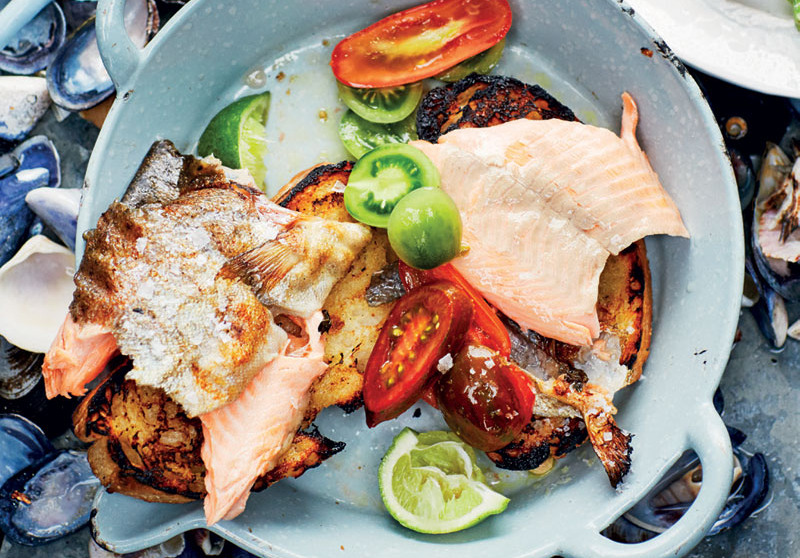
People often claim to be scared of braaiing fish because the skin sticks to the grid and the fish can fall apart. The key to getting it right involves preparation and patience. Pete Goffe-Wood of MasterChef SA and the Kitchen Cowboys Weber Grill Academies says there are three secrets to cooking fish on a grid with the skin on:
1.Make sure your grid is spotlessly clean.
2. Oil and season the fish, and oil the grid, too.
3. When braaiing, leave the fish skin-side down for a little longer than you imagine – the skin needs to sear. Once that’s happened it won’t stick to the grid.
TRY: Smoky trout on charred toast with exotic tomato salad
4. EMBRACE NOSE TO TAIL... AND FIN
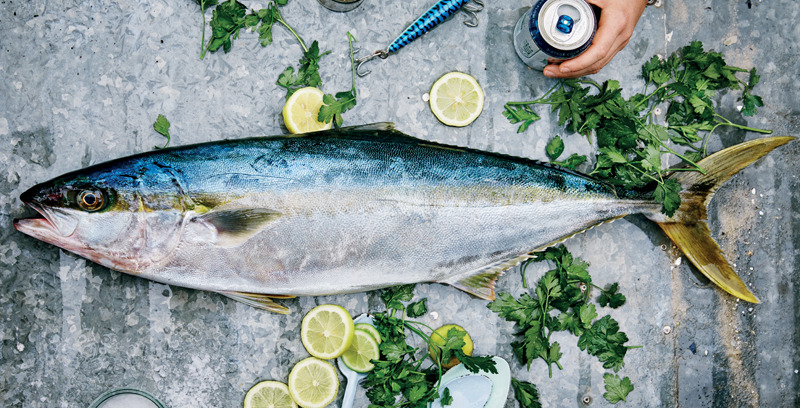
There’s something immensely satisfying about serving a whole fish. Score the outside and rub in aromatics like marjoram or citrus zest. Stuff with fennel or a slice of lemon if you like. Wrap it in foil and whack it on the braai or throw it in the oven. When it’s done, simply open up the foil on the table and you have a meal designed for communal eating.
And don’t waste your scraps. While nose to tail is a term usually applied to livestock, we are also fans of using fish bones, heads and tails to make fumet – the punchiest French fish stock you’ll ever taste. Use it in soups, chowders, veloutés and sauces.
Try: Mekong-style fish platter with whole fried fish
5. GO FOR GUILT-FREE STEAKS
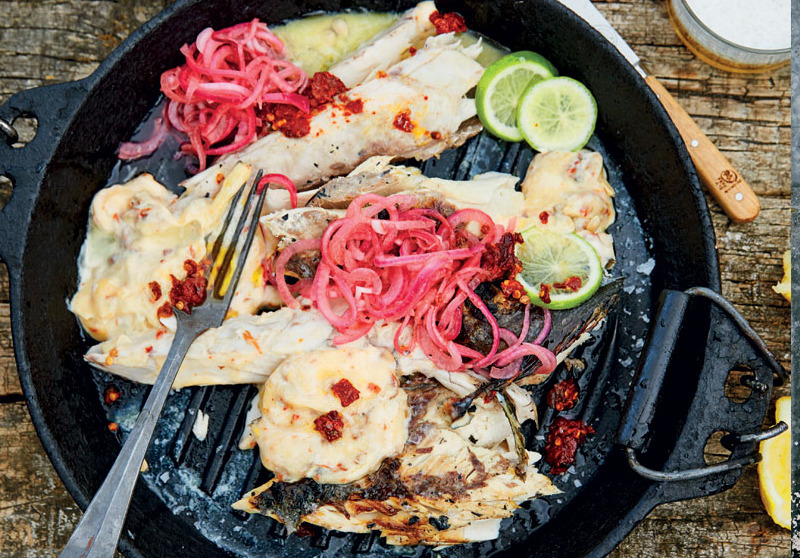
Swordfish and most species of tuna are heavily overfished, so avoid them when shopping for a fish steak. Hezron Joseph, one of the seafood experts at Woolworths, says yellowtail is an excellent alternative. “It’s a decent sized fish that makes great steaks when cut thickly.” Marinate them for an hour in mirin, soya sauce, sesame oil, lemon juice, ginger, and garlic before searing for 1–1½ minutes a side depending on your preference – when in doubt, always undercook it.
Try: Whole braaied yellowtail in newspaper with chipotle mayonnaise and red onion pickle
6. CATCH YOUR OWN
Okay, so not everyone is into fishing, but in every family or circle of friends there is at least one guy or girl who is, so put in a standing order with the fishing types in your crowd when they go on their next trip. A freshly caught fish, cooked over a wood fire somewhere along SA’s coastline or in the mountains, is about as close to perfection as you can get.
The rule here is to get the right permit and even if a species like Hottentot has a bag limit of ten fish per day, you don’t have to get them all. Only take what you know you will eat.
7. COLLECT LEGAL ALIENS
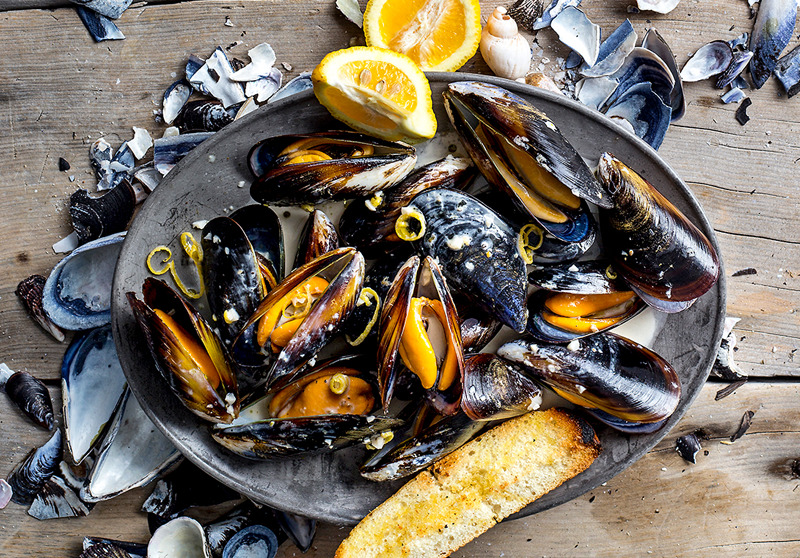
South Africa’s coastline features many different kinds of mussels, from the ribbed to the brown, black, estuarine, semi-striated and other varieties. But the one we eat the most – the Mediterranean or black – is technically an alien. Pavs Pillay, manager of the Southern African Sustainable Seafood Initiative (SASSI) says, “The Mediterranean mussel invasion has increased the biomass of mussels on the West Coast and helped provide a food source for the African oystercatcher – it was threatened and now the populations are recovering.
The Mediterranean mussel also saved the mussel industry because it is fast-growing, high-spawning and very resilient. Females are creamy-coloured and the males are bright orange, which people tend to prefer colour-wise.”
Try: Creamy lemon-pepper mussels
8. DO A DOUBLE-TAKE ON HAKE
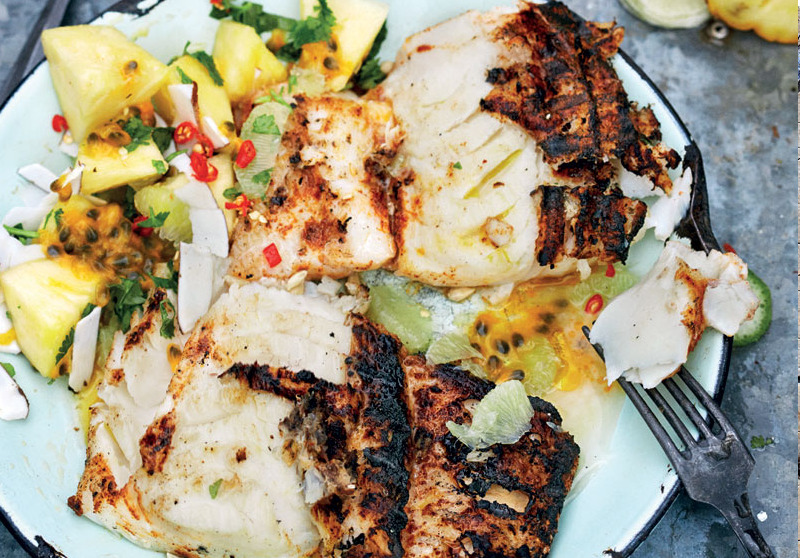
Hake, the most common “fish” of fish ‘n’ chips, is perhaps a little maligned for being so common. It’s not overly fishy so is seldom thought of as exciting or challenging, but it’s what you do with it that determines the table-side excitement levels. TASTE food editor Abigail Donnelly likes to brine it first, which helps season, firm and protect the fish before you grill or braai it. Brining also helps retain the juices, keeping the fish moist.
TRY: Brined hake with tangy pineapple-and-coconut salsa
9. TRY A FRESH OPTION
Too often when we think of “freshwater fish” we think of muddy, lippy characters – like bass or carp – that resemble Boris Johnson. Fortunately, there are other tasty options such as tilapia, which has firm flesh and a mild flavour profile that holds up to most cooking methods: you can grill, smoke, blacken or simply pan-fry tilapia, much as you would a saltwater species like angelfish.
Farmed freshwater rainbow trout are on the WWF-SASSI green list and you'll love them for their delicate flavour.
Try: Smoky trout on charred toast with exotic tomato salad
10. SQUID PRO QUO
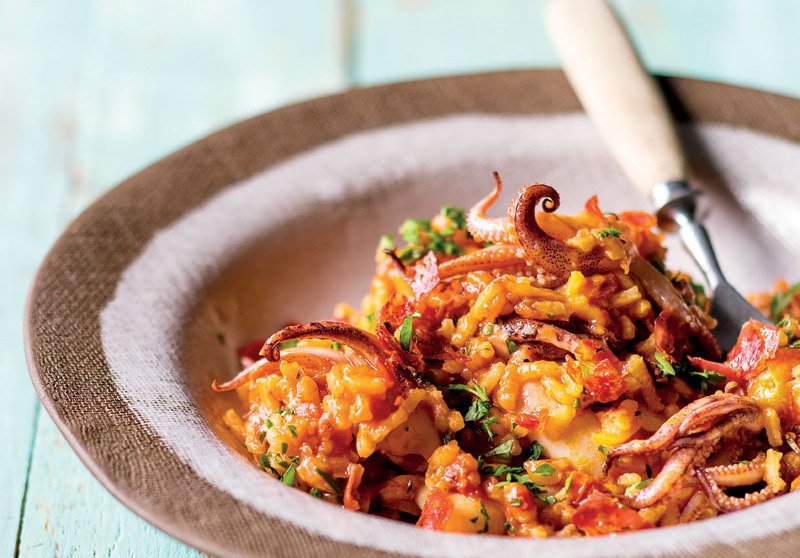
When it to comes to calamari, there are a few default options. There’s the pan-fried salt-and-pepper squid, which while delicious and simple, has become a bit too much of a stalwart starter. Then there are the grilled non-battered options that often take on the consistency of elastic bands, or the deep-fried batter bombs that can leave you a little queasy if poorly executed.
With a stuffable body section and removable tentacles, squid is perfectly suited for experimentation. Mix up your approach by stuffing the bodies like little marine haggis with chorizo, while dusting the tentacles in Parmesan and breadcrumbs and frying them on a griddle before serving with lemon and parsley.
Try: Calamari, chorizo and tomato rice
When you buy a fish you should have its common name, its scientific name, where it’s caught and where it comes from. Always ask for that information. Find out more about the fish you’re ordering at a restaurant or buying at
wwfsassi.co.za. Also use the FishMS service to make on-the-spot choices: type the name of the seafood species into an SMS and send it to 079 499 8795 – you’ll get a reply giving its status. Also download the free SASSI app on iPhone and Android for quick advice on whether to tuck in (green), think twice (orange), or avoid the fish altogether (red).
TEXT: Tudor Caradoc-Davies

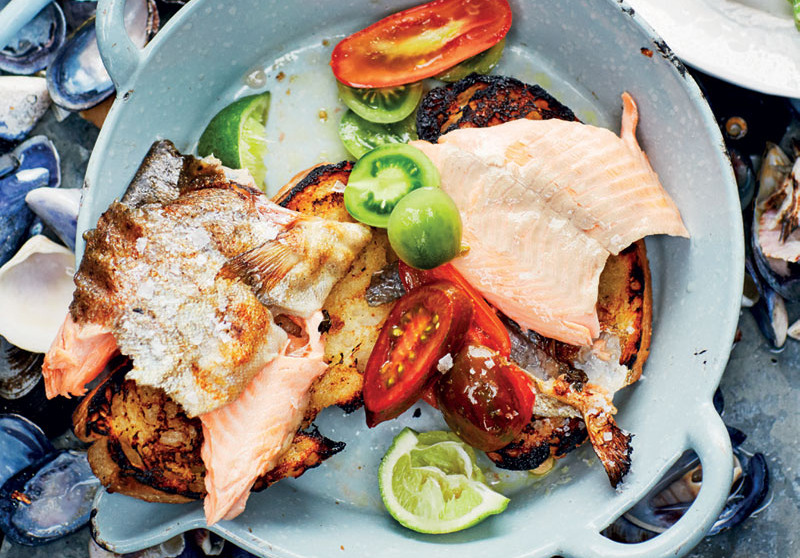

Comments